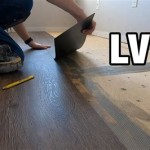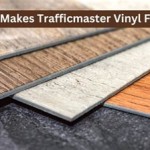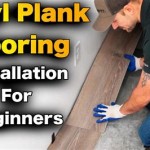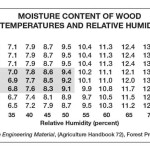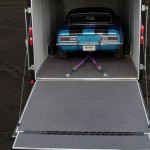Cement Flooring Cost Per Square Foot in Malaysia: A Comprehensive Guide
Cement flooring, known for its durability, minimalist aesthetics, and versatility, has gained considerable traction in Malaysian residential and commercial spaces. Understanding the factors influencing the cost per square foot is crucial for budgeting and making informed decisions when considering cement flooring installation. This article provides a detailed breakdown of cement flooring costs in Malaysia, exploring various types, installation processes, and associated expenses.
The term "cement flooring" encompasses several different options. While often used interchangeably, it's important to distinguish between these options as they significantly impact the overall cost. The primary types of cement flooring commonly found in Malaysia include polished concrete, cement screed, microcement, and self-leveling concrete. Each possesses unique characteristics, aesthetic qualities, and application requirements, directly influencing both material and labor costs.
Understanding Different Types of Cement Flooring
Polished Concrete: Polished concrete is achieved by mechanically grinding, honing, and polishing existing concrete slabs. The process involves progressively finer grits of abrasive tools to achieve a smooth, reflective surface. This method leverages the existing concrete structure, making it a cost-effective option if a suitable concrete slab is already in place. However, the condition of the existing slab significantly affects the final outcome and cost. Cracks, unevenness, or significant surface imperfections require additional preparation work, increasing the overall expense. Polished concrete is appreciated for its durability, low maintenance requirements, and resistance to wear and tear. It is commonly used in industrial spaces, retail outlets, and modern residential settings.
Cement Screed: Cement screed is a thin layer of composed of cement, sand, and water applied over a concrete substrate to create a level and smooth surface. It's typically used as an underlayment for other flooring materials, such as tiles, carpets, or vinyl. However, cement screed can also be left exposed as a finished floor, often sealed or coated for protection and aesthetic appeal. The cost of cement screed is relatively lower compared to other cement flooring options, making it an attractive choice for budget-conscious projects. However, it's essential to ensure the screed is properly applied and cured to prevent cracking or crumbling. The final appearance of cement screed can be quite raw and industrial, which may or may not suit the desired aesthetic.
Microcement: Microcement, also known as microtopping, is a cement-based coating applied in thin layers (typically 2-3 mm) over various surfaces, including concrete, tiles, wood, and plaster. It offers a seamless, modern look and can be customized with different colors and textures. Microcement is highly versatile and can be used on floors, walls, and even furniture. Its application requires specialized skills and experience, as the thin layers are susceptible to cracking or unevenness if not applied correctly. The cost of microcement is generally higher than cement screed due to the specialized materials and labor involved. However, its aesthetic appeal, durability, and ability to cover existing surfaces make it a popular choice for renovations and design-focused projects.
Self-Leveling Concrete: Self-leveling concrete, also known as self-smoothing concrete, is a cementitious mixture designed to flow and level itself, creating a perfectly flat and smooth surface. It's typically used to prepare uneven or damaged subfloors before installing other flooring materials. However, like cement screed, it can also be used as a finished floor, often polished or coated for protection and aesthetics. Self-leveling concrete is more expensive than cement screed due to the specialized additives that enhance its flowability and leveling properties. Its ease of application and ability to create a perfectly flat surface make it a time-saving and cost-effective option for projects requiring a high degree of precision.
The material costs of the various cement flooring options will vary significantly depending on the brand, quality, and supplier. For instance, imported microcement may be considerably more expensive than locally produced cement screed. Furthermore, specialized additives, sealants, and coatings will add to the overall material cost.
Factors Influencing Cement Flooring Cost
Multiple factors contribute to the overall cost of cement flooring per square foot in Malaysia. These factors should be carefully considered when planning a project to ensure an accurate budget and avoid unexpected expenses. The key influencing factors are:
Surface Preparation: The condition of the existing subfloor significantly impacts the cost. If the subfloor is uneven, cracked, or contaminated, extensive preparation work is required before installing the cement flooring. This may involve patching cracks, leveling the surface, removing existing flooring materials, and cleaning the substrate. The more extensive the preparation work, the higher the overall cost.
Material Selection: As discussed earlier, the type of cement flooring chosen directly affects the material cost. Polished concrete, if the existing slab is suitable, might be the most cost-effective option. However, if a new concrete slab is required, the cost will increase significantly. Microcement, due to its specialized materials and application requirements, is generally more expensive than cement screed or self-leveling concrete.
Labor Costs: Labor costs vary depending on the complexity of the project, the skill level of the installers, and the location. Polishing concrete requires specialized equipment and expertise, which may command a higher labor rate. Similarly, applying microcement requires skilled artisans to achieve a seamless and aesthetically pleasing finish. Cement screed installation, while relatively simpler, still requires experienced installers to ensure proper mixing, application, and curing to prevent cracking or crumbling. The location plays a role as labor rates in urban areas like Kuala Lumpur or Penang may be higher than in rural areas.
Size and Complexity of the Project: Larger projects generally benefit from economies of scale, reducing the cost per square foot. Smaller, more complex projects, such as those involving intricate designs or difficult access, may incur higher labor costs. The shape of the room or area can also impact the cost. Rooms with many corners or unusual layouts require more cutting and fitting of materials, increasing both material waste and labor time.
Sealing and Coating: Cement flooring is porous and susceptible to staining and damage if left unsealed. Sealing and coating are essential to protect the floor and enhance its durability and lifespan. The type of sealant or coating chosen will influence the cost. Options range from basic acrylic sealers to more advanced epoxy or polyurethane coatings, each offering varying levels of protection and aesthetic appeal. High-performance coatings, while more expensive, provide superior resistance to scratches, stains, and chemicals, making them a worthwhile investment for high-traffic areas.
Design and Customization: Adding pigments, dyes, or decorative aggregates to cement flooring can enhance its aesthetic appeal but will also increase the cost. Stenciling, scoring, or creating textured surfaces also requires additional labor and materials, impacting the overall expense. Custom designs, such as logos or intricate patterns, necessitate specialized skills and equipment, further increasing the cost.
Location: The geographical location of the project also influences the cost. Transportation costs of materials and labor can vary depending on the distance from suppliers and the availability of skilled workers. Projects in remote areas may incur higher transportation costs and potential delays in material delivery.
Cost Breakdown and Estimated Prices
Providing a precise cost per square foot for cement flooring in Malaysia is difficult without specific project details. However, the following provides estimated ranges for different types of cement flooring, offering a general idea of the potential investment. These figures are indicative and may vary based on the factors discussed previously. Prices are quoted in Malaysian Ringgit (MYR).
Polished Concrete (Existing Slab): MYR 8 to MYR 25 per square foot. This range assumes the existing concrete slab is in relatively good condition and requires minimal preparation. The cost will increase significantly if the slab needs extensive repairs or a new slab is poured.
Cement Screed (Finished Floor): MYR 5 to MYR 15 per square foot. This is a relatively cost-effective option, particularly for large areas. The cost includes the screed material, application, and basic sealing.
Microcement: MYR 25 to MYR 60 per square foot. Microcement is the most expensive option due to the specialized materials and skilled labor required. The cost includes the microcement coating, application in multiple layers, and sealing.
Self-Leveling Concrete (Finished Floor): MYR 10 to MYR 30 per square foot. The cost includes the self-leveling concrete, application, and basic sealing or coating.
These prices are approximate and exclude additional costs such as subfloor preparation, complex designs, or high-performance coatings. It is recommended to obtain quotes from multiple contractors to compare prices and services before making a decision. Providing contractors with detailed project specifications, including the size of the area, the desired finish, and any specific requirements, will help them provide accurate and competitive quotes.
When comparing quotes, it's crucial to consider the reputation and experience of the contractor. Choosing a reputable contractor with a proven track record of successful cement flooring installations can ensure a high-quality finish and avoid potential problems down the line. It's also advisable to check references and view completed projects to assess the contractor's workmanship and attention to detail.
In conclusion, the cost of cement flooring per square foot in Malaysia is influenced by a multitude of factors. Understanding these factors, researching different flooring options, and obtaining quotes from reputable contractors are essential steps in making informed decisions and achieving the desired aesthetic and functional outcome while staying within budget.

Cement Flooring Concrete Industrial Ground Service In Local Area At 5 Square Feet Pune

Cementitious Flooring

How To Choose The Right Flooring For Each Room In Your House Recommend My
Is Concrete Flooring Right For 2024 Find Out Timesproperty

Polished Concrete Floor Cost Effective And Durable Homify

Concrete Floor Polish Johor Bahru Jb Subang Selangor Kl Malaysia Service Repair Supplier Installer Renovation Amp Tiles Stonecare Sdn Bhd
Is Concrete Flooring Right For 2024 Find Out Timesproperty

Concrete Floor Polishing Malaysia Cement Grinding

Average Stained Concrete Floor S Forbes Home

Micro Topping Concrete Flooring Service At 280 Sq Ft In Hyderabad Id 25350552030
Related Posts

